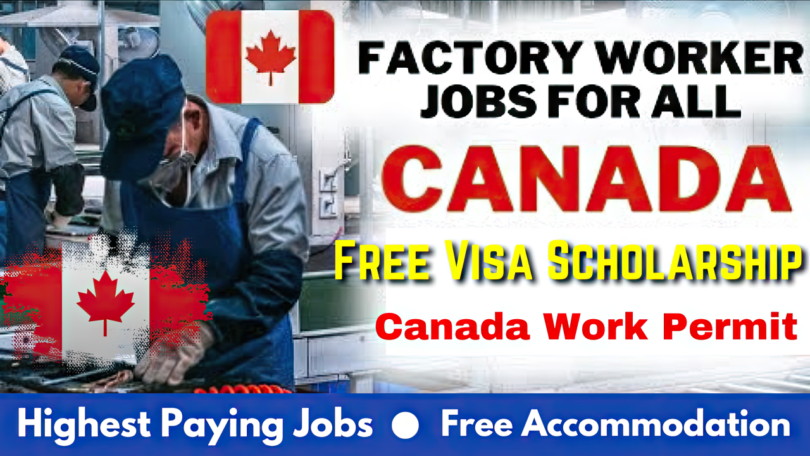When considering the various ways to get a work visa in Canada, it’s essential to first understand the different types of work permits available and how they align with your specific situation. Canada offers several visa options, including employer-specific work permits, which tie you to a single employer and open work permits, which allow you to work for any employer in Canada.
Each visa type has its own set of eligibility criteria, such as having a valid job offer from a Canadian employer, demonstrating language proficiency and sometimes securing a Labour Market Impact Assessment (LMIA). These requirements ensure that the Canadian labor market is protected while offering foreign workers opportunities to contribute to the economy.
To successfully secure a work visa in Canada, thorough preparation is key. Applicants need to gather all required documentation, including proof of job offers, language test results, educational credential assessments and police clearance certificates.
The process also involves submitting a detailed application, paying the necessary fees and possibly attending a biometrics appointment. Understanding the step-by-step application process and meeting all the eligibility criteria can significantly increase your chances of obtaining a work visa, paving the way for a successful career and life in Canada.
Work Visas In Canada
1. Employer-Specific Work Permit: A Tailored Path
One of the most straightforward ways to get a work visa in Canada is through an employer-specific work permit. This type of permit is linked to a specific job with a specific employer, meaning you need a job offer in hand before you can apply. The process starts with your prospective Canadian employer, who may need to obtain a Labour Market Impact Assessment (LMIA). An LMIA is a document that proves there are no qualified Canadian citizens or permanent residents available to fill the position, justifying the need to hire a foreign worker.
Once the LMIA is approved, you can submit your application for an employer-specific work permit. This approach is particularly advantageous for skilled workers, as many industries in Canada are in high demand for talent, including IT, healthcare and engineering. While the application process can be meticulous, the benefit of having a clear job path and employer support can make this one of the most reliable ways to get a work visa in Canada.
2. Global Talent Stream: Fast-Tracking Tech Professionals
In the fast-paced world of technology, Canada has recognized the need to attract top-tier talent quickly and efficiently. The Global Talent Stream (GTS) is part of the Temporary Foreign Worker Program and offers a fast-track process for obtaining a work visa in Canada. This stream is specifically designed for highly skilled workers in the tech industry, such as software developers, data scientists and IT project managers.
The GTS allows eligible employers to hire foreign talent without the lengthy LMIA process that other streams require. Instead, the GTS focuses on a streamlined application process, often resulting in work permits being issued in as little as two weeks. If you have a background in tech and are looking for one of the fastest ways to get a work visa in Canada, the Global Talent Stream could be your ticket to quickly entering the Canadian job market and making an immediate impact.
3. Post-Graduation Work Permit (PGWP): Transitioning from Study to Work
For international students studying in Canada, the Post-Graduation Work Permit (PGWP) offers a seamless transition from academic life to the Canadian workforce. This is one of the most popular ways to get a work visa in Canada, as it allows graduates to gain valuable Canadian work experience, which can also serve as a stepping stone toward permanent residency.
The PGWP is open to graduates from eligible Canadian post-secondary institutions. The duration of the permit depends on the length of your study program, with permits issued for up to three years. One of the significant advantages of the PGWP is that it’s an open work permit, meaning you can work for any employer in Canada, in any location and in any field. This flexibility allows you to explore various career opportunities across the country, giving you the freedom to find the best fit for your skills and interests.
4. International Experience Canada (IEC): A Cultural Exchange with Work Opportunities
For young adults looking for both adventure and work experience, International Experience Canada (IEC) is a unique program that combines travel and employment. The IEC provides opportunities for youth from over 30 countries to work and travel in Canada through one of three streams: Working Holiday, Young Professionals and International Co-op (Internship).
The Working Holiday stream is the most flexible, allowing participants to work for multiple employers across Canada while exploring the country. The Young Professionals stream, on the other hand, is aimed at those who have a job offer in Canada and are looking for professional work experience in their field of expertise. The International Co-op stream is ideal for students who want to gain practical experience in their area of study. The IEC program is a fantastic way to get a work visa in Canada while enjoying the chance to immerse yourself in Canadian culture and lifestyle.
5. Provincial Nominee Program (PNP) Work Permits: A Pathway to Permanent Residency
The Provincial Nominee Program (PNP) offers another effective way to get a work visa in Canada, especially if you’re targeting a specific province or territory. Each Canadian province and territory operates its own PNP, tailored to meet its unique labor market needs. If you have skills that are in demand in a particular province, you can be nominated by that province for a work visa.
PNP nominations are highly regarded because they often lead to permanent residency. In many cases, applicants first receive a temporary work permit to start working in Canada while their permanent residency application is processed. This dual pathway-starting with a work visa and leading to permanent residency-makes the PNP an attractive option for those looking to make Canada their long-term home.
Eligibility Criteria: Are You Qualified?
One of the most crucial aspects of finding ways to get a work visa in Canada is ensuring that you meet the eligibility criteria. Canada is known for its rigorous but fair immigration processes, so it’s important to tick all the boxes.
1. A Valid Job Offer
For most work visa categories, having a valid job offer from a Canadian employer is a must. This job offer must meet specific conditions laid out by the Canadian government, including the type of work, the duration and the wage. Your employer may need to obtain a Labour Market Impact Assessment (LMIA) to prove that no Canadian worker is available to fill the position before hiring a foreign national.
2. Language Proficiency
English and French are the official languages of Canada and proficiency in one or both can be a critical factor in your work visa application. Depending on the job, you may be required to take a language proficiency test such as the IELTS or CELPIP for English or the TEF for French.
3. Educational Credentials
Your educational background will be scrutinized as part of the application process. Some work visas require specific qualifications, especially if you’re applying for a job that demands higher education or specialized skills. It’s advisable to have your educational credentials assessed by a recognized Canadian organization.
4. Proof of Financial Stability
To get a work visa in Canada, you must demonstrate that you have enough funds to support yourself and any dependents during your stay. This is to ensure that you won’t be a financial burden on the country during your time there.
5. Clean Criminal Record
Canada places a high emphasis on security, so a clean criminal record is essential. You’ll need to provide police clearance certificates from your home country and any other country you’ve lived in for six months or more in the past decade.
6. Good Health
A medical exam may be required to prove that you’re in good health and don’t pose a risk to public health in Canada. This step is particularly important for those who intend to work in health-related fields or with vulnerable populations.
Required Documentation: Getting Your Paperwork in Order
Once you’ve established that you meet the eligibility criteria, the next step in exploring ways to get a work visa in Canada is gathering the required documentation. The application process can be time-consuming, so it’s important to prepare these documents well in advance.
1. Job Offer Letter
A formal job offer letter from your Canadian employer is essential. This letter should outline the specifics of your job, including your role, salary and terms of employment.
2. Labour Market Impact Assessment (LMIA)
If your job offer requires an LMIA, your employer will need to provide this document as part of your application. The LMIA is proof that your employment will have a positive or neutral impact on the Canadian labor market.
3. Language Test Results
If required, submit your language test results. These results should be recent and meet the minimum score requirements for your specific visa category.
4. Educational Credential Assessment (ECA)
If your visa category requires it, you’ll need to submit an Educational Credential Assessment (ECA) report. This report verifies that your foreign degree, diploma or certificate is valid and equal to a Canadian credential.
5. Proof of Funds
Bank statements, proof of savings or other financial documents are necessary to show that you can support yourself and your dependents in Canada.
6. Medical Examination Report
If required, include the results of your medical examination. Make sure to visit a doctor who is approved by the Canadian immigration authorities.
7. Police Clearance Certificates
Gather police certificates from every country you’ve lived in for six months or longer over the past ten years. This is a critical step in proving your good character and clean criminal record.
How to Apply for a Work Visa in Canada: Step-by-Step
Now that you’ve got a handle on the eligibility criteria and required documentation, let’s talk about the actual application process. Finding ways to get a work visa in Canada isn’t just about meeting criteria; it’s also about navigating the process efficiently.
Step 1: Determine Your Visa Type
The first step is to determine which type of work visa you need. This will depend on your job offer, nationality and other factors. Canada offers various work permits like employer-specific permits, open work permits and more specialized permits like those under the International Mobility Program.
Step 2: Gather Your Documents
Ensure you have all the necessary documents ready. Missing or incorrect documentation is one of the most common reasons for application delays or rejections. Organize your documents as per the checklist provided by the Canadian immigration authorities.
Step 3: Submit Your Application
You can apply for a work visa in Canada either online or on paper. Applying online is generally faster and allows you to track the status of your application. If applying on paper, make sure you send your application to the correct visa office.
Step 4: Pay the Application Fees
The application process involves fees, which vary depending on the type of work visa you’re applying for. These fees can be paid online or through other specified methods.
Step 5: Attend a Biometrics Appointment
After submitting your application, you may be required to provide biometrics (fingerprints and a photo). You’ll need to schedule an appointment at a local visa application center to complete this step.
Step 6: Wait for a Decision
Once everything is submitted, it’s a waiting game. Processing times can vary, so patience is key. You can check the status of your application online.
Step 7: Prepare for Entry into Canada
If your application is approved, you’ll receive a port of entry letter of introduction and in some cases, a temporary resident visa to enter Canada. Upon arrival, present these documents to the border officer to receive your work permit.




